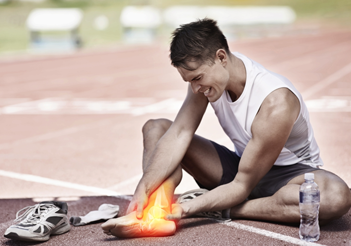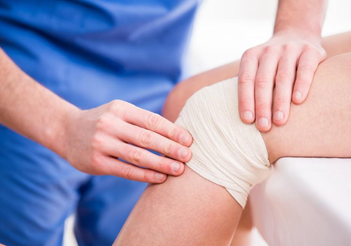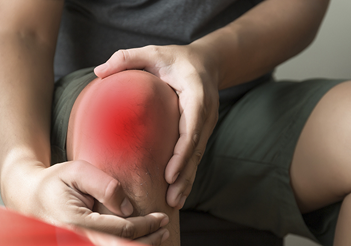Sex and arthritis: let’s say it’s time to raise curtains/ let’s take it to drawing room/centrestage
When I wrote the word “sex” to begin this article, my well-nourished cultural morality appeared out of nowhere and grappled me, asking, “What are you writing?” That, too, in our group’s main publication, which enjoys widespread acclaim among our common fraternity of doctors and patients. When I regained my senses after a brief period of confusion, my desire to write this article grew even stronger.
Sex has long been thought to be a topic best discussed behind iron curtains and with extreme secrecy, even if it means public exposure of a relationship’s bad companionship. It’s not hard to believe that, after Amazon, YouTube, Google, Gmail, and Hotmail, sex-related words are among the most sought-after words in the virtual world (google search), but are still rarely discussed in real life. In fact, it has a hidden share of the popularity of other commonly searched words. We love to watch it, read about it, participate in it, and enjoy it in all of its forms—but why, with all of this interest and openness, and even 30 years after the chart-topping song “Let’s Talk About Sex” by the group Salt-N-Pepa, is this still a taboo topic in society that we struggle to openly discuss?
In my more than a decade of arthritis practice, I met thousands of patients and professional colleagues of all ages, genders, socioeconomic classes, and ethnic groups. We talked about treatment, work, lifestyle, and many other aspects of arthritis, but only a few doctors and patients were able to engage in open communication about sex. The majority either remains silent or speaks indirectly, like in traditional Indian films, where props such as flowers, birds, and trees are used to symbolise it.
Sexual health is an essential element of our overall wellbeing, and it has a direct and indirect impact on our micro and macro environments. Unlike other chronic disorders, arthritis has long been seen to be a sex-neutral medical condition, although it can have a significant impact on our sexual lives in a variety of ways. It can cause physical discomfort (Pain, stiffness, fatigue, limited movement and decreased muscle strength) that makes different positions or acts unsuitable, as well as emotional issues (depression, reduced self-esteem, decreased sexual expression, low sex drive and side effects of medication) that lead to an aversion to active sex life. It sometimes causes dryness in the sexual organs of the female partner also, which may make sex uncomfortable. It may also topple the balance of your partnership and your shared tasks in everyday life, where you need each other’s assistance.
It is important to discuss not only for fun but also for starting a family. Inability to start a family has a lot of psychosocial consequences for engaged partners, as well as a lack of respect in many ethnic groups. By raising age-old iron curtains and putting it front and centre, we can dispel beliefs about it and guide our patients to have an active, happy and graceful sexual life even with arthritis.
People have many questions, such as whether or not having sex is harmful to their arthritis. Does sex help arthritis? Will my arthritis medication affect my sexual life? Could these medications have an impact on my family planning? Is it possible for joint replacement to interfere with my sexual activities? And What are our options for resolving these issues?
We’ve already talked about how arthritis affects sexual life in various ways. Contrary to popular belief, sex and orgasm are effective pain relievers. The act entails gentle range-of-motion exercise that reduces pain and inflammation. Another mechanism that explains its positive effect on pain control is the release of the body’s endogenous pain relievers, oxytocin and other endorphins. It strengthens the muscles around the joints, which aids in their support. According to Palo Alto sex therapist Marty Klein, PhD, it is also mood-elevating, which helps alleviate pain.
According to a study conducted by Beverly Whipple, a renowned sexologist and author and professor emeritus at Rutgers University, “during orgasm, the pain tolerance threshold and pain detection threshold increase significantly by 74.6 per cent and 106.7 per cent, respectively.”
Generally, arthritis medications do not interfere with sexual functioning; however, a few medications may interfere with libido and some may cause erectile dysfunction if used long term. Some medications, such as sulfasalazine, have the potential to temporarily reduce sperm count.
If you’re planning a pregnancy, it’s critical to talk to your doctor because some medicines can cause a miscarriage or an undesired abnormality in the baby. In such instances, it may be necessary to use contraception or devise particular drug washout methods. Few medicines can pass breast milk and damage your infant, so it’s critical to have an in-depth and honest conversation with your doctor.
To overcome the previously mentioned challenges, remember that the brain is the centre of all our emotions and thoughts, as well as the transmitter of impulses that initiate a chain of events leading to genital arousal, making the brain the largest sexual organ. As a result, you should prepare your mental frame by discussing concerns and solutions with your partner, counsellor, doctor, or other health care expert. Staying sexual in your body language will help you build an environment with your spouse. Before making love, consider making alterations in place (cushioning, height, and adequate supports, for example), taking a hot shower, a brief bout of exercise, and possibly analgesic drugs. For a cohesive atmosphere in your safe, happy, active, and graceful sex experience with arthritis, be informed, adaptable, and experimental with your preferences. Emotional and physical intimacy must be the goal instead of focusing on intercourse.
If nothing else seems to be working, you may want to consider joint replacement options to address the arthritis problem in the affected joints. Although, due to a lack of suitable understanding and training, sexual activities during the initial recovery period may be detrimental. Sexual life improves dramatically after surgery, and you can contemplate resuming sex life after 8-12 weeks. When Jose A. Rodriguez, M.D., head of Lenox Hill Hospital’s Centre for Joint Preservation and Reconstruction, evaluated 147 persons with severe arthritis, he discovered that the majority of them had sexual impairment and unhappiness. However, 81 per cent of them reported greater sexual frequency and enjoyment after joint replacement.
A word of caution for people who have had hip replacements: certain movements are prohibited due to the risk of dislocation, which may necessitate position changes. Kneeling may be difficult for 6-8 weeks after a knee replacement, so necessary adjustments and training would be beneficial. So, rather than enduring a repeat intervention and subsequently repenting owing to a misadventure, there should always be an open dialogue between patient and caregivers about the movements patients should avoid in a particular joint replacement depending on the surgical technique utilised. If you’re unsure about anything, ask – they’ve probably been asked the same question many times before.
Finally, I can state that having a decent sexual life is not an unreasonable expectation of arthritis patients, nor is it a misrepresentation if we doctors prescribe sex as part of arthritis care with other modalities.








